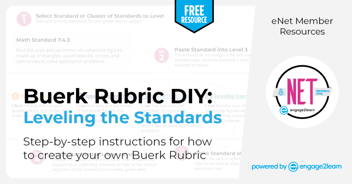Recognition Systems with Growth As An Outcome | engage2learn
It’s important for people to feel recognized. No matter their age or occupation, humans spend much of their daily lives collaborating with other people to accomplish their goals. While the notion of recognition is most popular in the workplace, it’s also important to consider for learners in public schools.
Physical tokens of recognition, like ribbons, medals, and trophies, have always been popular in the education context for students. But these tokens don’t focus on encouraging further learner growth. It’s a one-and-done deal that traditionally rewards only the high achievers. What about the rest of the pack? Under this type of recognition system, many learners are left behind, with zero recognition that motivates them and helps them continue to develop.
Recognition systems are crucial to student growth, but they need to be implemented in a way that makes all learners feel included. They’re crucial to the learner experience because they can help learners set and accomplish concrete goals personalized to their experience.
Recognition systems are crucial to student growth, but they need to be implemented in a way that makes all learners feel included. Click To Tweet
Modern Recognition Systems
It’s time to think outside the trophy case when it comes to student recognition. Try these three alternatives to recognize learners for their accomplishments while continuing to help them grow through goal-setting.
Training opportunities
Many students learn by teaching others. Why not encourage learners to teach to their fellow learners? Allow each learner to choose a topic of his or her strength, which they then present to the class. It’s an amazing opportunity to recognize learner strengths while encouraging Future Ready skills through teaching others.
Digital badging
When educators whip out the medals, trophies, and ribbons, they often have a badging mindset, but implement it in a way that doesn’t encourage growth. An individual may have grown exponentially in comparison to their previous accomplishments, but because they didn’t meet the same standard as the top earners, their efforts are not widely recognized. Moving badging into the digital sphere encourages learner growth while recognizing their achievements. Digital badging gives each learner a yardstick to measure their efforts, encouraging long-term goal setting.
For example, the e2L eGrowe online platform allows students to earn badges for mastery. Learners progress through lessons and document their goals and growth on the online platform, earning badges while encouraging further development.
This personalized, gamified approach makes growth fun and measurable for students in a way that educators can use to measure learner growth as well.
This personalized, gamified approach makes growth fun and measurable for students in a way that educators can use to measure learner growth as well. Click To TweetChoice time
Learners thrive when they have the chance to study topics that are important to them. As recognition for their hard work, educators can give learners structured “choice time” to explore their interests. For example, if a learner is interested in marine life, the educator can give the student an assignment to explore recently discovered aquatic species.
This choice time recognizes learners for their hard work, while giving them the opportunity to grow. This method helps foster a natural curiosity and desire for lifelong learning in the classroom.
The bottom line
Recognition systems are a great way to make anyone feel appreciated. But beyond giving kudos, these systems should encourage personal growth and development through the power of goal-setting. Educators can implement innovative recognition systems that prioritize growth while making learners feel appreciated.



